Four Recipes for Eye-Healthy Holiday Cooking
The holidays—a time of joy, togetherness, and yes, indulgence. Families bond together over food in all kinds of ways…around the holiday table, with food and beverage gifts, and in indulging in sweets and treats that are in abundance this time of year.

A Word on Indulgence
We all indulge! Sometimes we indulge because it feels good emotionally.
Sometimes we indulge because holiday foods are in abundance.
Sometimes we indulge because the holidays bring more stress than bonding.
We can’t tell you what to eat. You may have other health considerations. But from a nutritionist’s perspective, indulgence in moderation has its own benefits if you’re indulging for the right reasons.
My grandmother made a habit of indulging in “bites”. She would ask for a sliver of pie. And then, “oh, perhaps one more sliver”.
She fully focused and savored her small slice of pumpkin or apple pie and felt quite content with just a taste. (This may take some practice, but can be well worthwhile!)
So don’t deny yourself pie, or a dinner roll. Just try to fill up first on items that are healthy for you. You can meet your eyesight diet goals and still include satisfying options for holiday celebrations. Healthy eyes do not mean giving up taste.
Can Food Really Help with Macular Degeneration?
Nutrition is a complex science, particularly because it interacts with other factors, often unknown. For example, your genetics, your physical environment, your stress levels, your age, metabolism and health conditions, the health of your gut microbiome, your previous and current lifestyle choices all factor into how much impact good nutrition can have on your particular AMD progression.
But why not? Why not learn about foods that could improve your chances to slow AMD progression? Why not take this adventure with us to find the foods and recipes you most enjoy to swap out for ones that may taste great but are not good for you?
Be sure to fill your plate with colorful vegetables, and substitute high carbohydrate foods for those higher in fiber. Adding flavors, such as herbs and spices can awaken excitement for more adventures. Healthy and tasty options abound! If you can help your eyesight and your body by eating tasty foods, why not?
Food can be medicine, but not just because of its nutritional value. Also because we bond with each other over food. The combination of love and friendship, and pleasure shared is priceless. Especially if it leads to better health.
Opportunities
Don’t think of the recipes below as mere alternatives, but, rather, opportunities. Yes, these simple recipes are easy alternatives to sweeter, less healthy options, but they also invite you back into the kitchen if you’ve felt discouraged from holiday cooking with vision loss.
They also represent an opportunity to talk to your loved ones about macular degeneration.
Imagine gifting your grown child, or grandchild, a gift of roasted nuts, and when they remark on how delicious, you respond with, “yes, and it’s healthy for your eyes too!”. A spark of curiosity gets ignited presenting a natural opening to talk about macular degeneration.
True story. We just finished production on a new patient story film featuring a woman who was able to save her eyesight from major damage because she knew about macular degeneration from her father. When she had concerning visual symptoms, she called her eye doctor right away and was able to get sight-saving anti-VEGF treatments before scarring occurred. She credits her father for alerting her to macular degeneration when she was younger.
Recipes
Tamari-Roasted Nuts
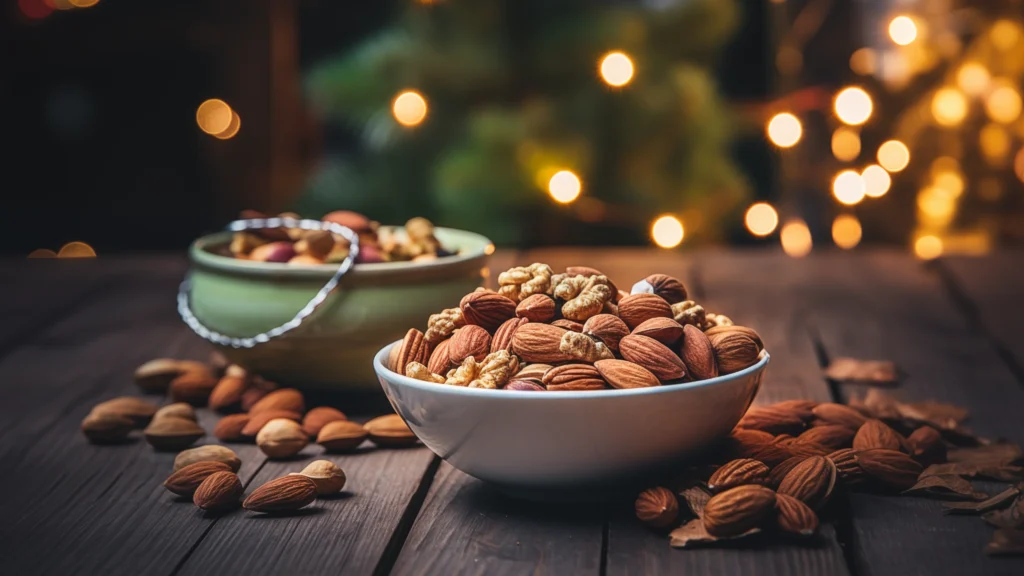
This recipe is a great holiday party snack and will be an instant favorite. It also makes a wonderful gift.
Walnuts are a good source of shorter chain omega 3s (so are almonds). The recipe is also an excellent source of vegetable proteins, a low-glycemic-load snack (which means your blood sugars have a better chance of being steady), while also low in saturated fat. These are all important considerations for your eyesight.
Ingredients:
- 1 Cup Almonds
- 1 Cup Walnuts
- ½ cup Pumpkin Seeds
- 1-2 Tablespoons reduced sodium soy sauce or tamari
- ½ teaspoon ground cumin (or more to taste)
- ½ teaspoon ground coriander
- ½ teaspoon garlic powder (or more to taste)
- pinch of cayenne (optional but adds a nice kick)
Directions:
Preheat oven to 300 degrees.
Place nuts & seeds on cookie sheet. Toast in oven until they begin to turn golden and give off a nutty aroma (10-12 minutes). Mix reduced sodium soy sauce or tamari and spices together in large bowl with toasted nuts and toss until well covered. Return to oven to dry out (2-3 minutes).
Store in freezer or sealed jar. In addition to being a party snack or gift, save this recipe for use any time throughout the year. These nuts make a crunchy addition to salads and grains or just to snack on. Try them on oatmeal for a change of pace.
Recipe adapted from Feeding Your Family With Whole Foods by Cynthia Lair
Crunchy Chickpeas
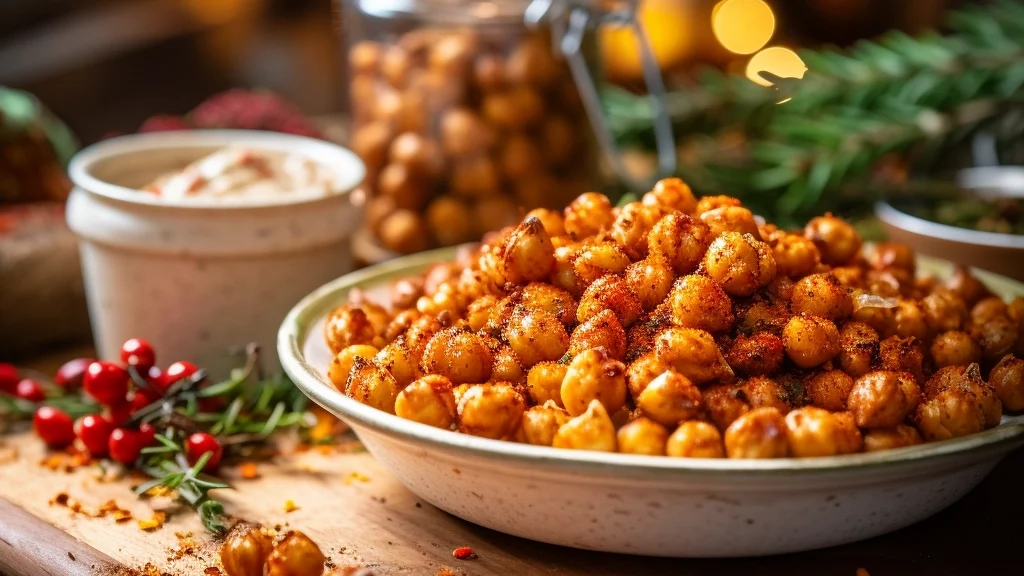
Great as a nibble, or on salads, chickpeas are a wonderful prebiotic food (helps your microbiome protect you), high in fiber, low in saturated fat (which we need to limit), and with a good amount of vegetable protein. An excellent source of fiber and good fats, they are balanced with approximately 15g carbohydrates per serving, and are favorably low in glycemic load.
Another eye-healthy addition to the snacks table at your holiday party, or to top a salad.
Ingredients:
- 1 (12 ounce) can organic chickpeas (garbanzo beans), drained
- 2 tablespoons extra virgin olive oil
- garlic salt (optional)
- cayenne pepper (optional)
- curry powder (optional)
Directions:
- Preheat oven to 450 degrees F (230 degrees C).
- Blot chickpeas with a paper towel to dry them.
- In a bowl, toss chickpeas with olive oil, and season to taste with garlic salt or cayenne pepper or curry powder, if using. Spread on a baking sheet, and bake for 30 to 40 minutes, until browned and crunchy. Watch carefully the last few minutes to avoid burning.
Baby Spinach Salad with Roasted Pears, Walnuts, Farmer’s Cheese & Orange Balsamic Vinaigrette
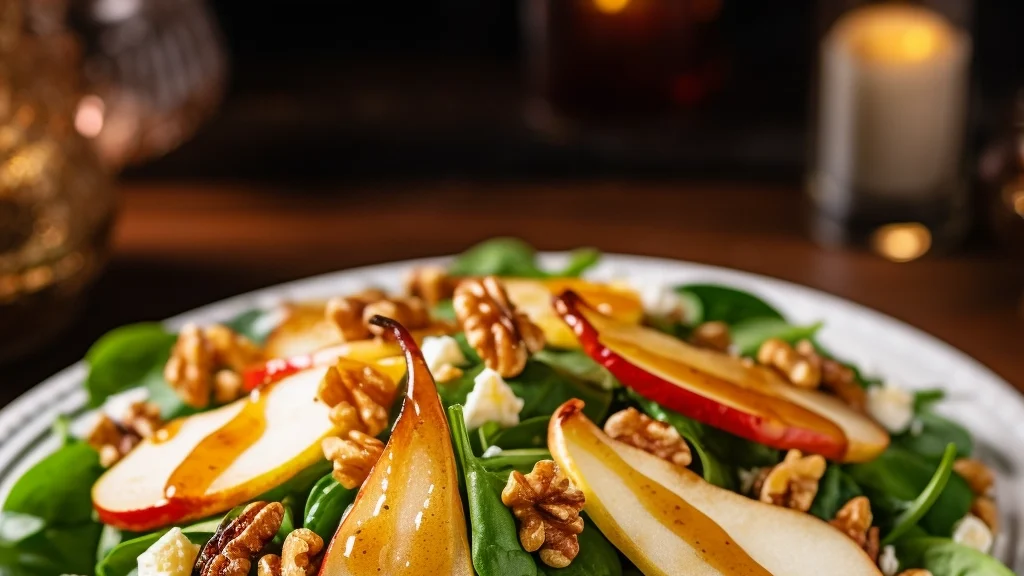
This festive salad has plenty of carotenoids (antioxidants good for eyesight), good fats without a lot of bad fats, protein, fiber and plenty of flavor! This dish is good for health in many ways: lactose free with a low glycemic load.
Ingredients:
Salad
- 1 bag pre-washed baby spinach leaves
- 2 pears; peeled, cored, sliced thin and roasted for 15 minutes in a 350 degree oven
- 4 oz of farmer’s cheese or blue cheese, crumbled
- 1 shallot, minced
- Walnut pieces for garnishment
Dressing
- 2-3 tbsp of no-sugar-added fresh orange juice (you can also add in a teaspoon of orange zest for a more pronounced flavor)
- 2 tbsp balsamic vinegar
- 1 tsp Dijon mustard
- 6 tbsp extra virgin olive oil
Directions:
- Begin by dividing spinach equally on serving plates and topping with roasted pears. Use one half of a pear for four servings or a whole pear for two servings. Add crumbled cheese and walnuts and set aside.
- In a medium bowl, combine orange juice, vinegar and shallots. If you prefer a mellower shallot flavor, do this step first to allow the shallots to soften in the acids. Whisk in Dijon mustard and then slowly pour in olive oil while continuing to whisk. Go very slowly to create an emulsion and ensure the dressing won’t separate.
- Add one to two tablespoons of vinaigrette to each plate. Serve with additional dressing on the side.
- Makes 2 main dish sized portions or 4 side-salad portions.
Easy Cranberry-Goji Delight
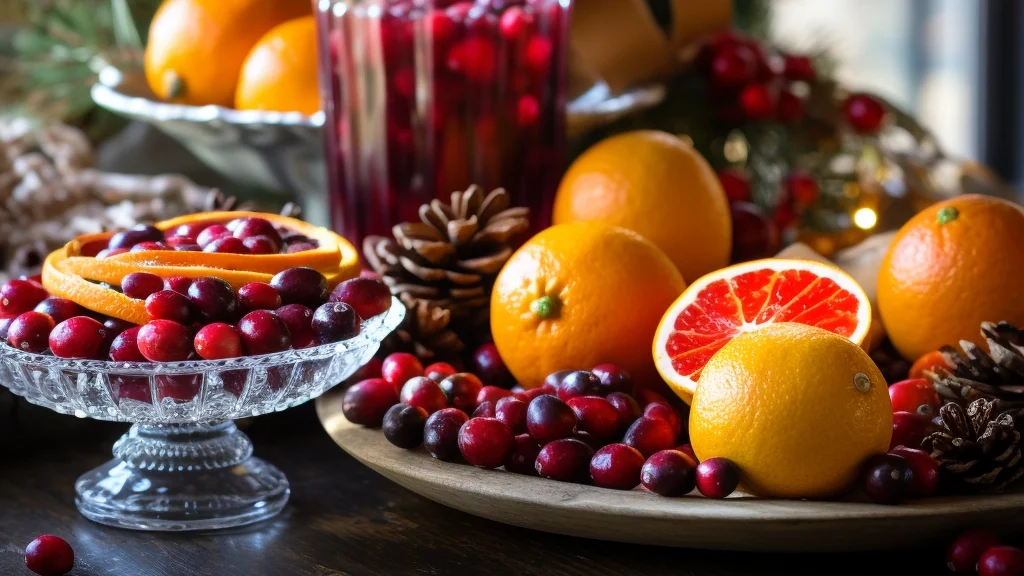
Goji berries are a good source of lutein and zeaxanthin, known for slowing AMD progression. Combined with cranberries, ginger and orange, this delicious “delight” is a healthier alternative to cranberry sauce with added sugar.
Ingredients:
- 1 bag organic cranberries (fresh or frozen)
- 1 cup dried goji berries, unsweetened.
- ¼ cup grated ginger
- Zest of one orange
- 1.5 cups water
(optional) add organic pomegranate syrup to taste (about a tablespoon).
Directions:
Blend all ingredients in a medium saucepan. Put it all on medium heat, and watch and listen for the cranberries to POP. Stir occasionally, simmering until cranberries are soft. Enjoy cold or warm.
Enjoy these recipes, and may your holidays be filled with warmth, good company, and, of course, delicious, eye-nourishing delights!
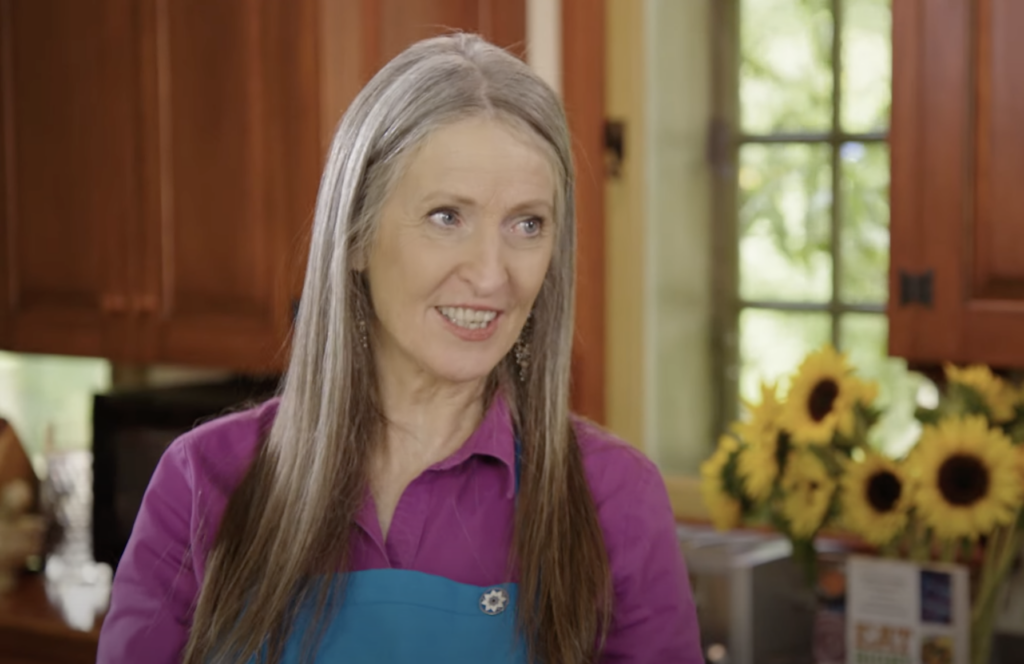
Written in collaboration with Barbara Olendzki, RD, MPH, LDN, Director of the Center for Applied Nutrition, Mass Chan Medical School, and AMDF Nutrition Consultant. All recipes courtesy of Barbara Olendzki and The Center for Applied Nutrition. Click here for more about the AMD Diet™, including links to our cooking show, free recipes, and more.

